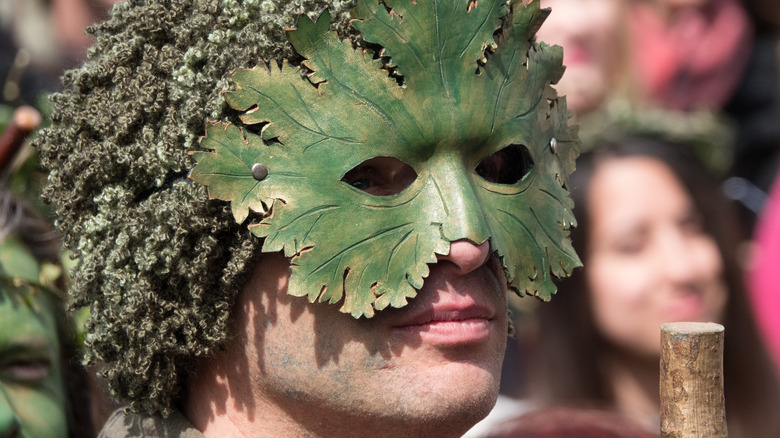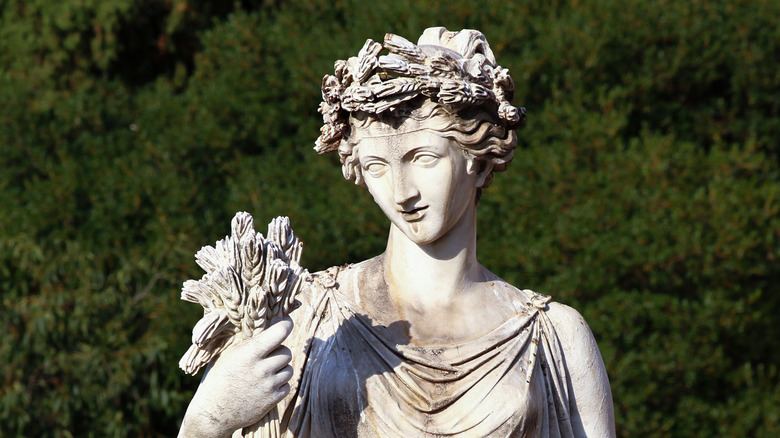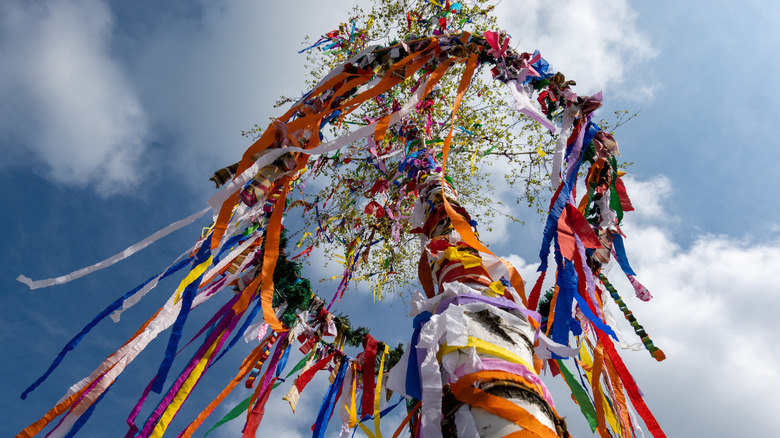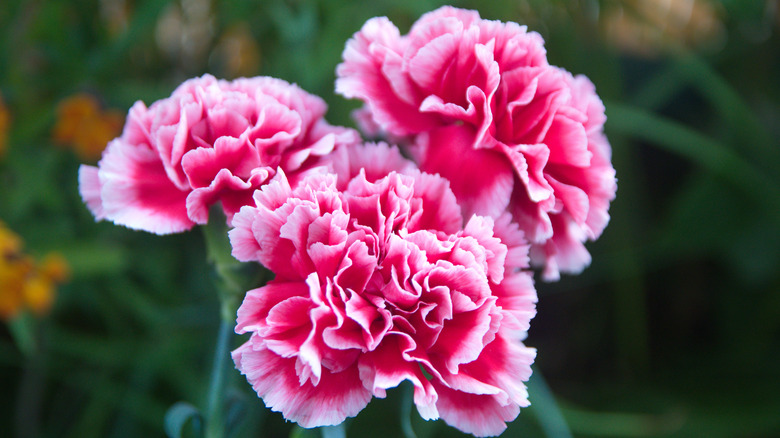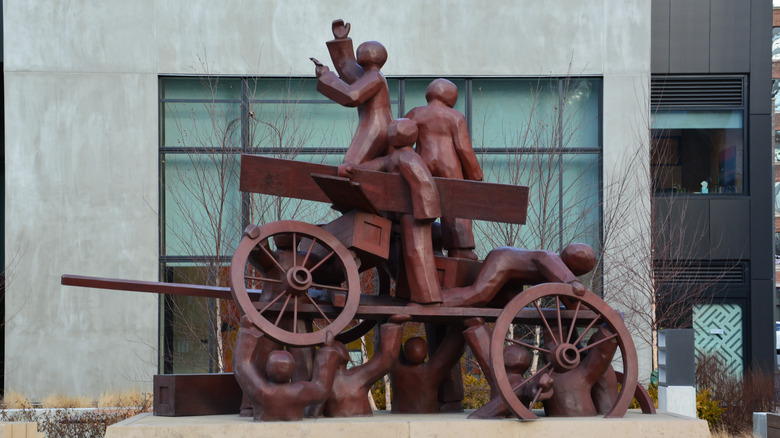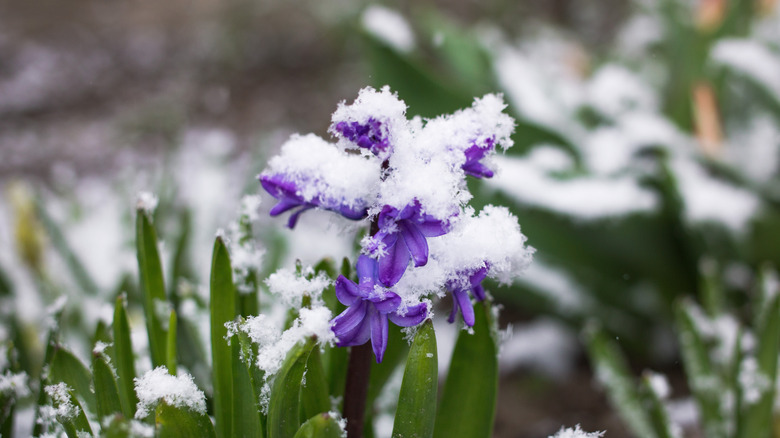What Is The History Behind The Seasonal Holiday Of May Day?
There are plenty of ways we mark the beginning of spring. The spring equinox, when days begin to lengthen as nights get shorter, can mark the end of a long winter for some. Others might look to Groundhog Day to figure out when they can put away the winter coats and start planting flowers. We might say that March comes in like a lion and goes out like a lamb, or that the rainy days of April will lead to flowers later on.
But perhaps the real beginning of spring doesn't come around until the month of May. That's what the May Day holiday is meant to show, anyway, according to Britannica. By that time of year, at least in the Northern hemisphere, snow is a thing of the past and everyone can come out of their winter blues. Springtime celebrations on the First of May go back for centuries, although the holiday has taken on alternative meanings over time.
A holdover from ancient civilizations
May Day has a pretty vague origin story. Civilizations have been celebrating the start of spring around this time for centuries, going as far back as Ancient Greece and Rome (via Britannica). The Romans had a whole week of celebrations for the goddess of flowers, Flora, according to History. But they weren't the only ones. The ancient Celts held their own festival of Beltane on the first of May, because it was the halfway point of their year and represented "a division between the light and the dark," according to History.
When the Romans conquered the Celts, the two festivals were merged to create a combined springtime celebration. Honoring the change of seasons was meant to promote fertility for humans, livestock, and crops alike, according to Britannica, and served an important purpose for their cultures. But even the Celt and Roman celebrations don't explain the origins of many of the traditions still associated with May Day today, and practiced all over the world.
The Maypole and other festivities
Plenty of countries still celebrate older May Day practices, from Scandinavia and Asia to Central America. The holiday festivities can include flower garlands, the crowning of a king and queen, and dances around a tree or pole called a Maypole (via Britannica). Those ideas in the modern day might sound like they're straight from the horror movie "Midsommar," but they've been around for a lot longer.
In Medieval Europe, May Day was a widescale celebration. Entire villages would set up a Maypole and parade around with ribbons, according to History, and larger cities often had a permanent Maypole erected in town. It's not clear what culture first gave the Maypole its seasonal significance, but much like the celebrations of the Celts and Romans, History says, it probably originated as part of a fertility ritual. But now it's usually an excuse to dance around with your friends and some ribbons.
Some traditions just didn't stick
Although the Maypole and other May Day celebrations have stuck around for the long haul, not everything has such lasting impact. The Celts highlighted the importance of fire and cleansing for their Beltane rituals, according to History, and that's not something you really hear about with May Day today. Similarly, some cultures would encourage washing your face with morning dew on May 1 to bring beauty and healthy skin (via Britannica). Despite the current popularity of intense skincare routines, that trend doesn't seem to be coming back — yet.
One country in particular, though, seems to have moved away from practicing May Day much at all. The United States didn't latch onto the Maypole or other cultural festivities for this turning point in the seasons. That's because of the sizable influence of Puritans in early American culture, according to History. The Puritans didn't approve of or practice May Day rituals, so when the country came to be, those influences were left behind in Europe.
The modern fight for workers' rights
Rather than using May Day for fertility rituals and dancing in the grass, people in the United States decided to take a different approach. In the late 1800s, workers in America took to the streets to protest difficult working conditions during the first week of May and started an entirely different kind of annual tradition (via Time). Hundreds of thousands of people in the U.S. engaged in a strike in 1886 for something many now take for granted: the eight-hour workday.
The strikes resulted in altercations between union workers and police, according to Time, particularly in Chicago. Though a gathering of strikers downtown began as a peaceful protest, by the end of the day hundreds had been injured as a result of gunfire as well as a bomb. Nowadays, the May Day holiday associated with workers' rights is celebrated in 66 countries. Although the tradition began in the United States, it really isn't common here anymore. We celebrate Labor Day in September, in part because the May holiday came to be associated with socialist and communist ideals during the Red Scare (via Time).
There are plenty of traditions to choose from
The beginning of spring has a variety of meanings across cultures and even from one household to another. Whether you're dreading allergies, planting a garden, or going through the hassles of spring cleaning, it likely means something to you. In many cultures, it signifies the true start of a new year. And, much like the season itself, May Day has come to have a number of different meanings.
From the fire-filled, purifying rituals of the Celts, to the floral celebrations of Rome, to the pro-worker union protests in Chicago, there are more traditions at play than you might expect. Yet somehow, despite all of that history, it's hardly even a note on the calendar for most of the people living in the United States. Maybe this year is a chance to set up a Maypole in your backyard, plant a few flowers, or even read up on the U.S. labor movement.
